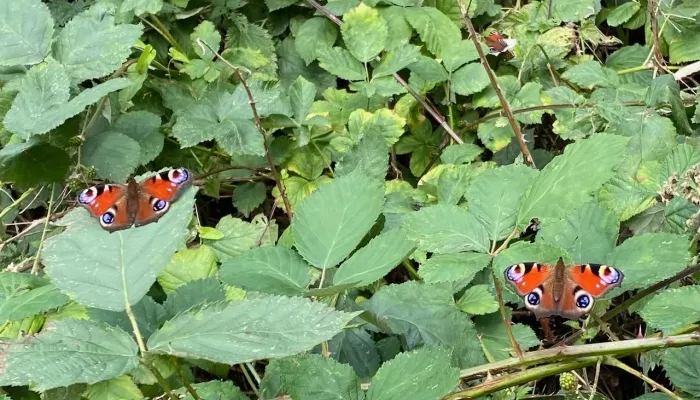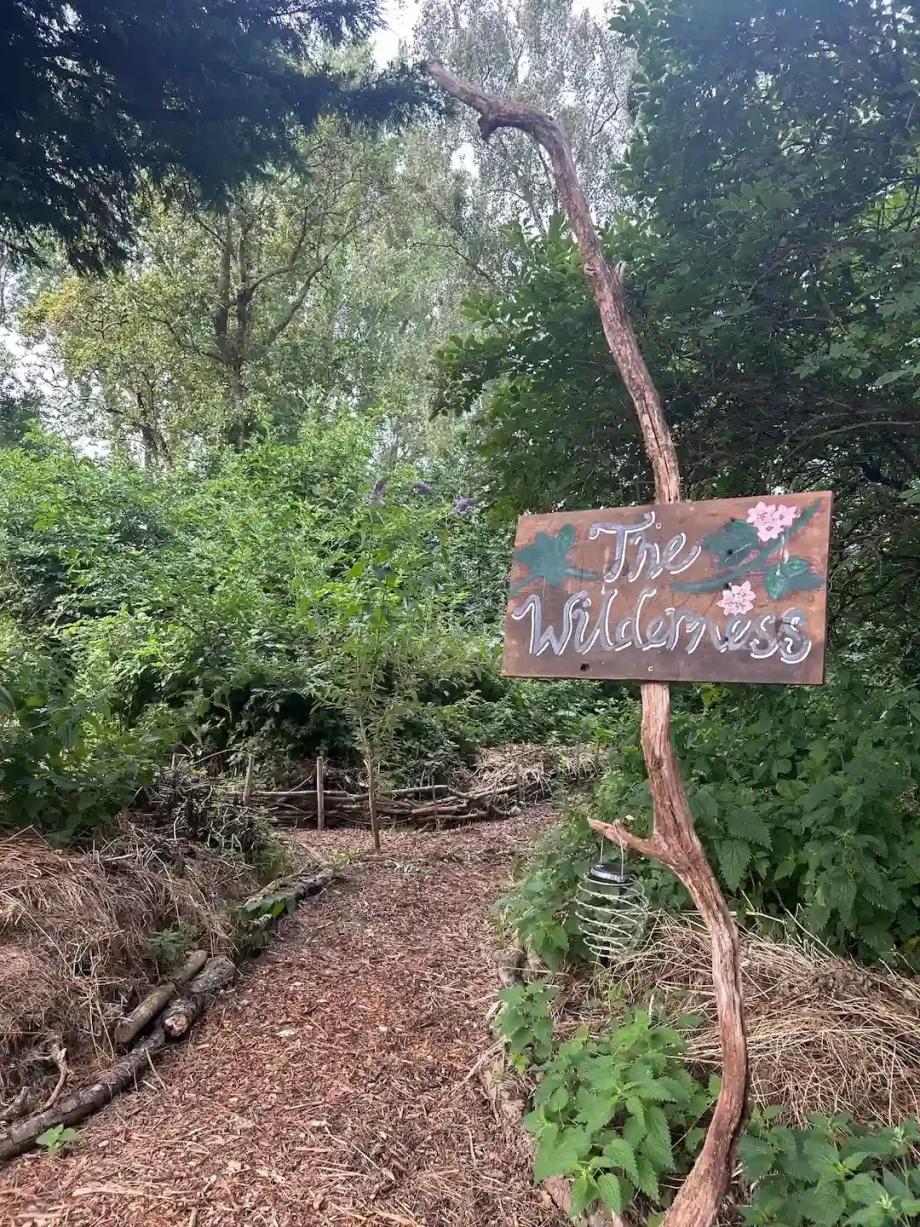
©️ Sally Edge
Winding paths & wilding areas
It was fantastic fun choosing the routes for the pathways: winding through a shady tunnel of self-seeded willows and hazels, back out into the light and round in circles to meet new paths. An excuse to play and build had unintentionally emerged from this practical task of dealing with the garden waste. In the years since then we have added to the original concept, putting sticks and woody prunings along the fronts of the windrows to make small fences (the same idea as 'dead hedges'), and laid woodchip on the paths.
It's been a real win-win plan. By creating paths we have access to the area again, while also allowing the spaces off the path to do just what they want to do - a small-scale wilding experiment if you like. It is far from a conventional, beautiful garden, but if you're interested in what happens when you leave nature to decide, as I am, it's a fascinating place to visit, and beautiful in a different way. There are a couple a mature trees, but otherwise it is populated by younger plants - bold pioneers such as willows, elders, nettles, brambles, buddleia, and bindweed - all fighting it out between themselves. Other than keeping it all cut back off the paths, the only intervention to the plants that I have made is to fling around some of the abundant nasturtium and calendula seeds that I get from the flowers in the vegetable garden. This led to some cheeky pops of bright colour in the jungly margins this year.
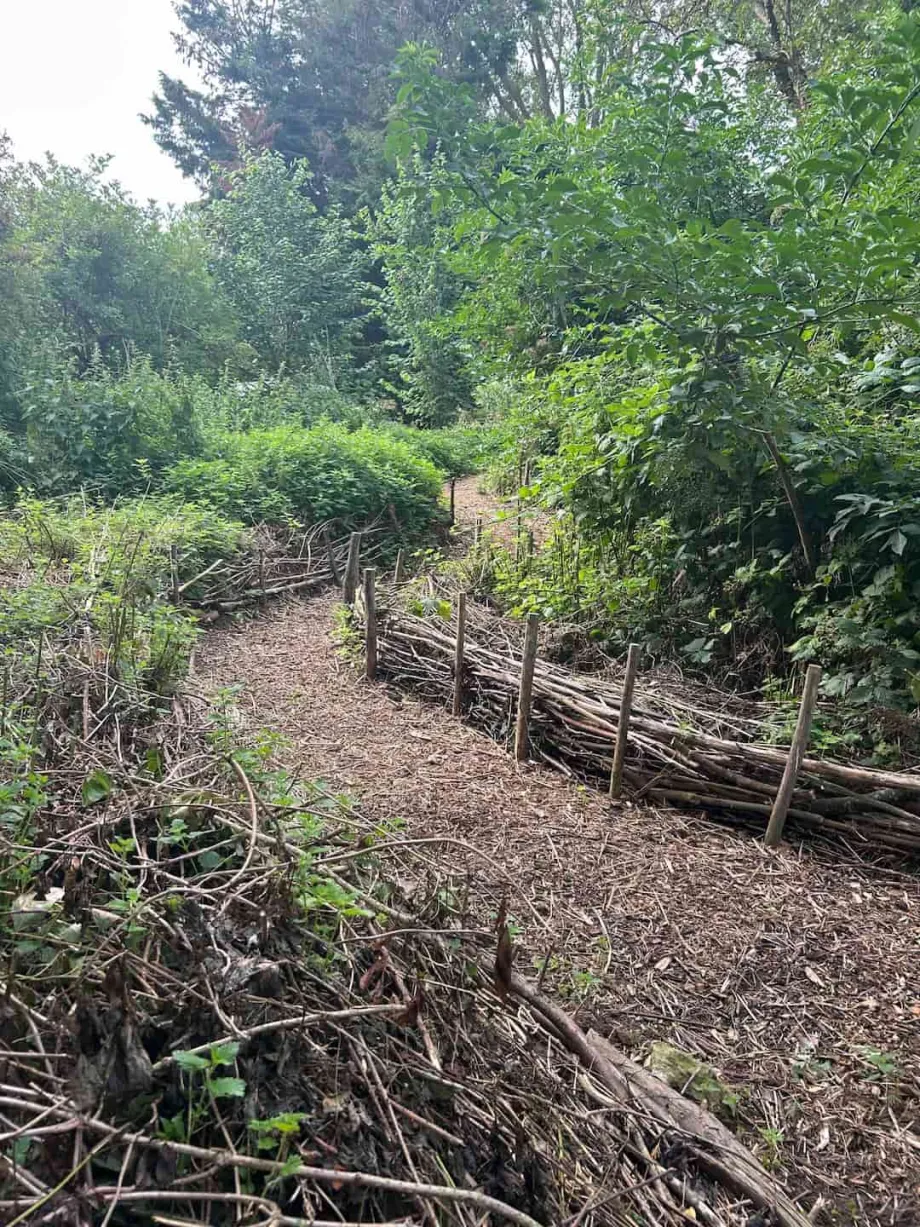
© Sally Edge
Wildlife residents & visitors
As you can imagine, it's a wonderful wildlife habitat. The slowly composting windrows, and decaying wood in the woodchip paths and dead hedges, are a feast and a haven for invertebrates. Birds are also frequent visitors - finding food in the pathways, and shelter in the scrubby trees. Mice tunnel down into piles of warm hay.
Sometimes I wonder if I'm making a mistake, allowing huge swathes of weeds to have such space in the garden, but then I remember how important they are for wildlife. Stinging nettles, for example, provide food for the larvae of many of our favourite butterflies, such as peacocks, red admirals and commas. We need to remember that it's not just the pollinating butterflies that need us to provide for them in the garden, but their caterpillar young too!
Last year's newcomer to this wild plant party was hedge bindweed. While I would pull it out from other places in the garden, here I can just let it do its thing. Again, I sometimes wondered what value there was to this gardening madness, but felt reassured on seeing how all the leaves had been nibbled - a lot of happy beetles I imagine! I will also be keeping an eye out for convolvulus hawk moths or elephant hawk moths, two of the many moth species whose larvae feed on bindweed.
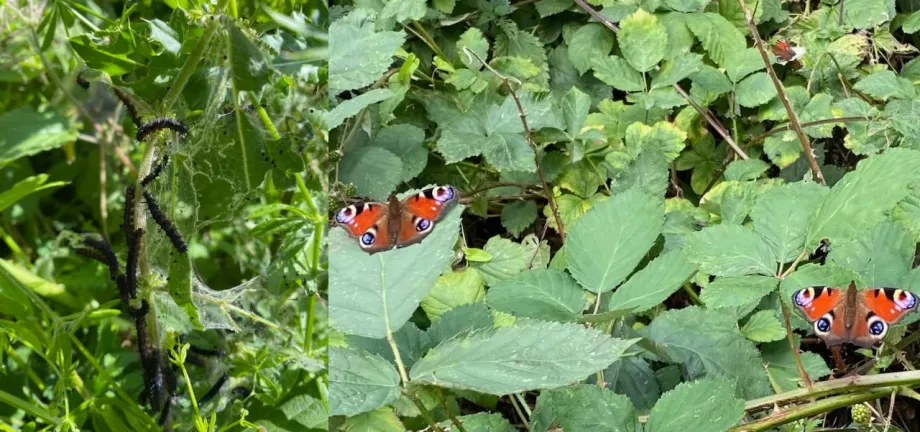
© Sally Edge
What next for the Wilderness?
Well, partly that's out of my hands. The grand soap opera of brambles versus willow, nettles versus bindweed, will continue to play out, and perhaps new actors will arrive to shake things up - a suddenly influx of a particular insect, or a new population of plants from seeds brought in with the composting windrows.
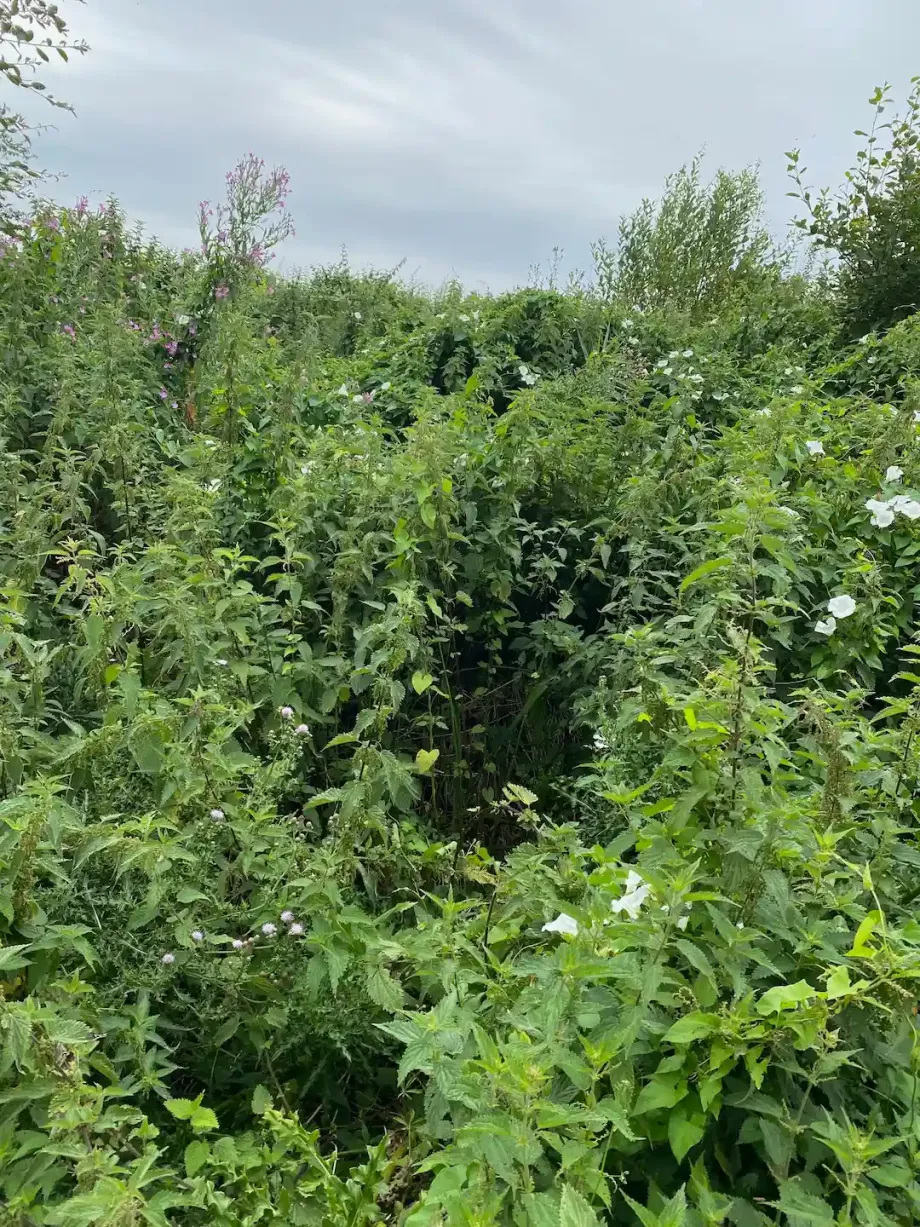
© Sally Edge
I will continue to maintain the human-friendly pathways, keeping them free from scratchers and stingers, so that they can keep leading us on curious adventures through the wild. In time, perhaps we'll add some kind of stopping place - a small pond perhaps, some logs to sit on, a willow structure in homage to all the wild willow growing around. We'll see what emerges!
Come along to the Langdon Court Open Garden
On the 11th May 2025, from 1-5pm, Langdon Court will be hosting a late spring open garden event as part of Kent Wildlife Trust's Wild About Gardens programme. See the gardens for yourself, get advice from our Wild About Gardens team and other specialists, and enjoy a varied programme of talks and mini garden tours.

